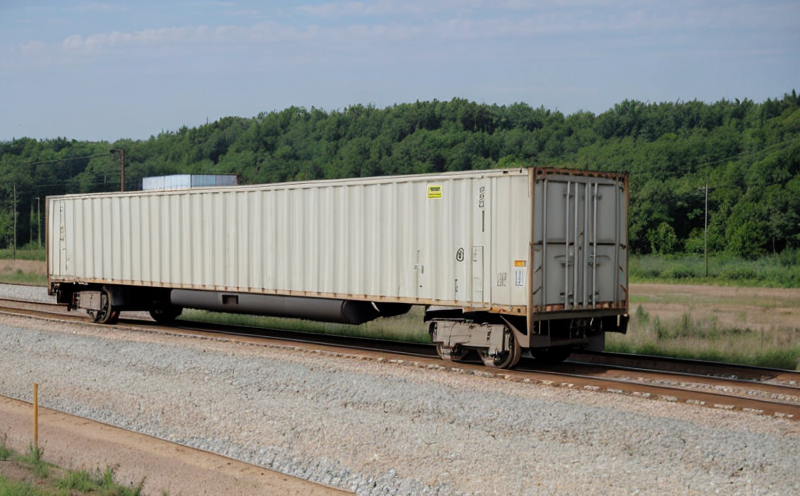UIC 544-1 Emergency Brake Testing of Freight Wagons
The UIC (International Union of Railways) standard, UIC 544-1, provides comprehensive guidelines for the testing and certification of emergency brakes in freight wagons. This service ensures that railway wagons meet stringent safety requirements set by international standards to protect passengers, cargo, and personnel on railways.
The test procedure is designed to evaluate how effectively an emergency brake can be applied under critical conditions. It requires precise and repeatable testing procedures that simulate real-world emergency braking scenarios. The standard applies to all types of freight wagons used in railway transport, from flat cars to container carriers, ensuring they are safe for use across various rail networks.
The testing process involves a series of steps aimed at replicating the conditions under which an emergency brake is required. These include:
- Initial inspection and preparation of the wagon to ensure it meets all safety requirements prior to testing.
- Application of the standard load on the wagon to simulate real-world cargo weight.
- Deployment of the emergency brake, with detailed recording of time taken for full application.
- Evaluation of braking effectiveness and speed reduction compared to static measurements.
The testing apparatus includes advanced brake testing equipment that can simulate various scenarios, including varying speeds and load conditions. The results are analyzed against UIC standards to ensure compliance with international safety protocols.
Compliance with UIC 544-1 is crucial for railway operators as it ensures the reliability of emergency braking systems across diverse railway networks. This testing service plays a pivotal role in enhancing overall rail safety, which is paramount given the critical nature of freight transportation worldwide.
Industry Applications
| Application | Description |
|---|---|
| Railway Networks | Ensuring safety and reliability of emergency braking systems across diverse railway networks. |
| Freight Carriers | Testing the effectiveness of emergency brake systems in various conditions to enhance safety. |
| Railway Operators | Meeting regulatory requirements and enhancing passenger and cargo safety. |
The UIC 544-1 test is particularly important for railway networks that operate across multiple countries, as it ensures that all freight wagons meet the same high standards of safety. This testing service supports various entities involved in rail transport by ensuring compliance with international safety protocols.
- Ensures reliability and consistency in emergency brake performance.
- Promotes safety across diverse railway networks.
- Aids in meeting regulatory requirements for freight wagon certification.
Why Choose This Test
- Ensures Compliance: UIC 544-1 testing ensures that all freight wagons comply with international safety standards, enhancing overall rail safety.
- Promotes Safety: By testing the effectiveness of emergency brakes in various conditions, this service helps prevent accidents and protect lives.
- Enhances Reliability: The precise and repeatable nature of UIC tests ensures consistent performance across all freight wagons.
The comprehensive nature of UIC 544-1 testing offers several advantages to railway operators, freight carriers, and quality managers. It not only helps in meeting regulatory requirements but also enhances the safety and reliability of rail transport systems worldwide.
International Acceptance and Recognition
The UIC 544-1 test is widely recognized and accepted across numerous countries that operate railway networks, including those adhering to European standards (EN) and international protocols. Its acceptance by regulatory bodies ensures that testing results are valid and credible.
By ensuring compliance with this standard, railway operators can confidently deploy freight wagons on various rail networks without worrying about safety issues. This international recognition also facilitates smoother operations for freight carriers by reducing the need for multiple tests across different jurisdictions.





